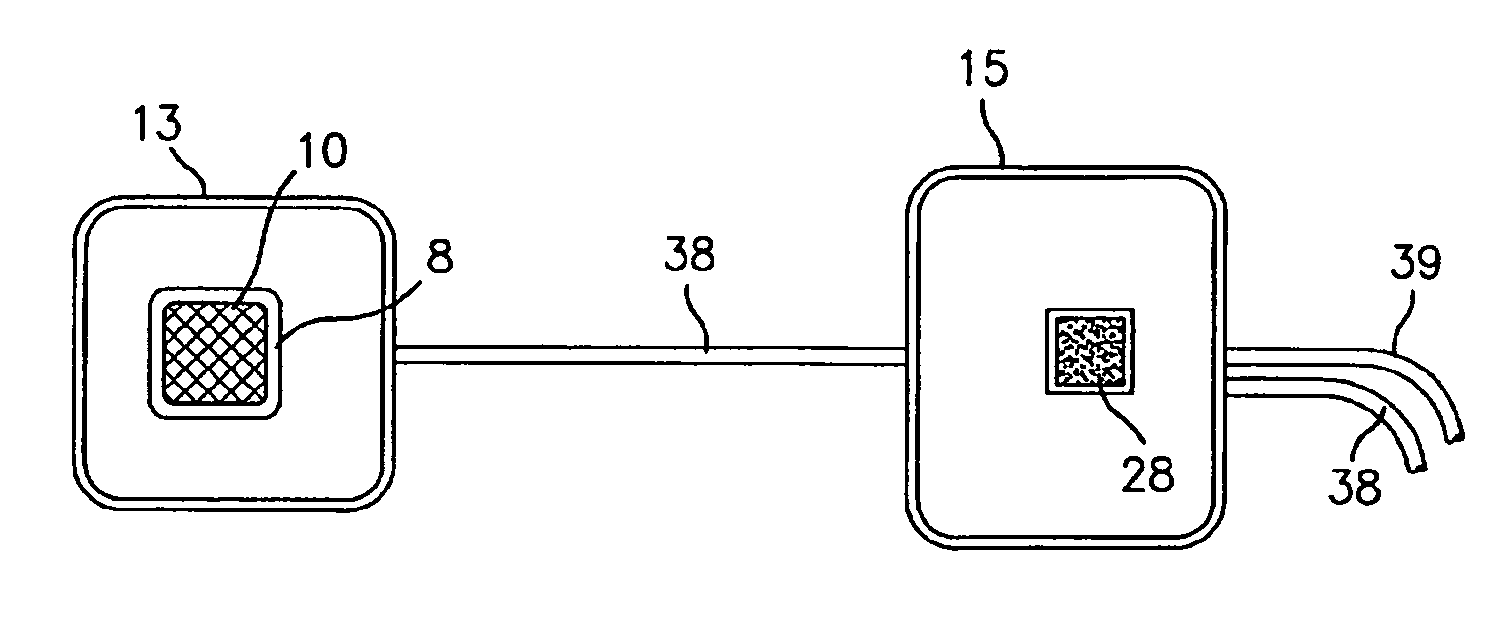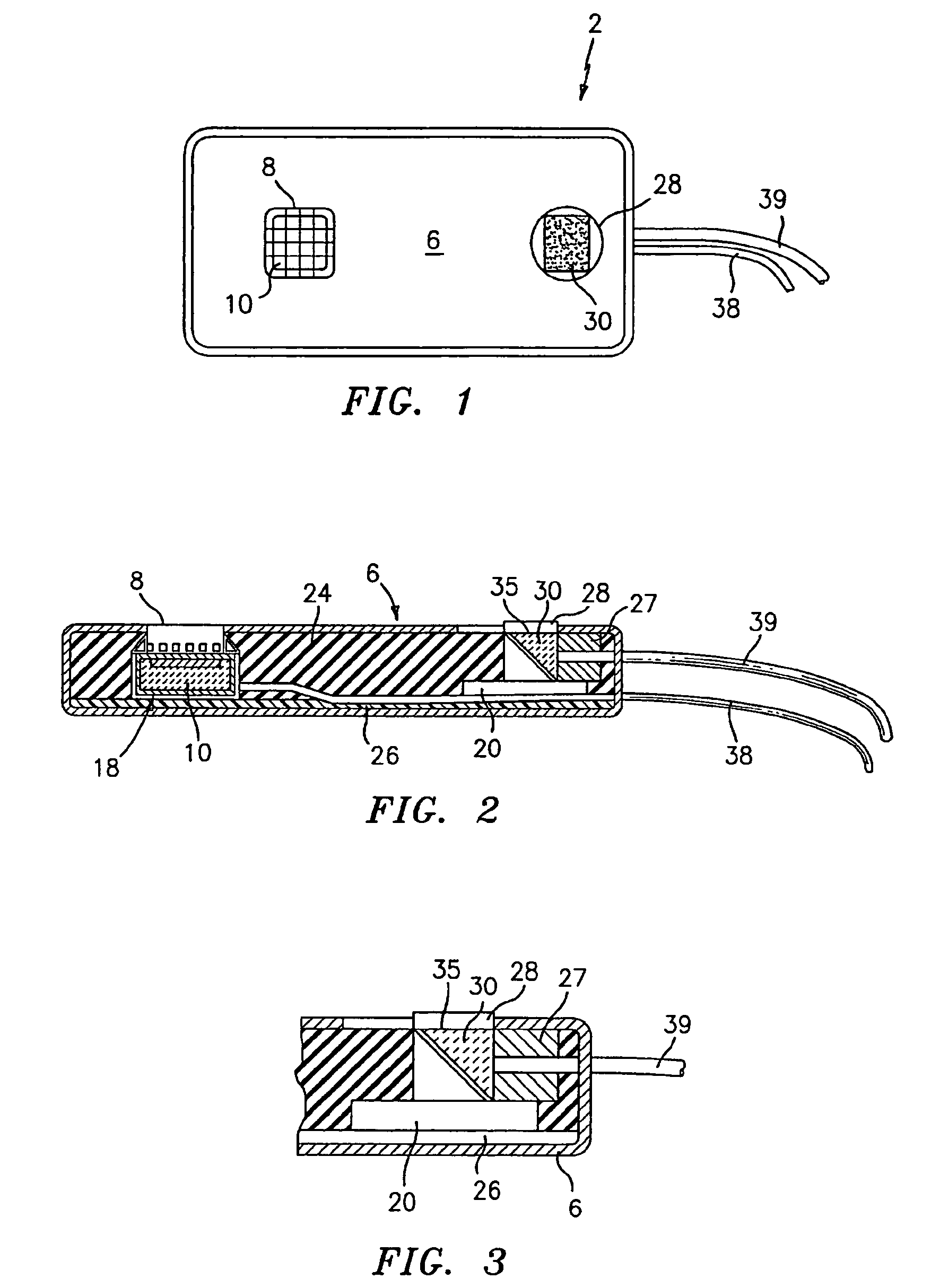Laser diode optical transducer assembly for non-invasive spectrophotometric blood oxygenation
a spectrophotometric and optical transducer technology, applied in the field of improvement of nearinfrared spectrophotometric optical transducer assembly, can solve the problems of difficult absolute measurement of chromophore concentration, inability of pulse oximetry to provide any information about venous blood, etc., and achieve the disclosure of sufficient light coupling efficiency for a spectrophotometric measuring system, easy and secure attachment
- Summary
- Abstract
- Description
- Claims
- Application Information
AI Technical Summary
Benefits of technology
Problems solved by technology
Method used
Image
Examples
Embodiment Construction
[0047]Referring now to the drawings, there is shown in FIGS. 1 and 2 an embodiment of a reflective-type NIRS transducer assembly which is denoted generally by the numeral 2. The transducer assembly 2 includes a housing 4 which contains the components of the transducer assembly 2. The housing 4 includes a flexible light-shielding surface rubber layer 6 having a first window 8 allowing light to reach the EMI shielded photodiode assembly 18 which is disposed in the housing 4. The surface layer 6 is made of a durable material to allow attachment and removal of a disposal adhesive attachment method. A laser light guide 28 is overlying and optically coupled to the prism 30, which protrudes slightly from surface layer 6. The sides of photodiode window 8 and light guide 28 perpendicular to surface layer 6 are painted with a light-shielding material to prevent optical shunting, i.e., light from entering through the sides of the windows. In an alternative embodiment, the surface of window 8 a...
PUM
 Login to View More
Login to View More Abstract
Description
Claims
Application Information
 Login to View More
Login to View More - R&D
- Intellectual Property
- Life Sciences
- Materials
- Tech Scout
- Unparalleled Data Quality
- Higher Quality Content
- 60% Fewer Hallucinations
Browse by: Latest US Patents, China's latest patents, Technical Efficacy Thesaurus, Application Domain, Technology Topic, Popular Technical Reports.
© 2025 PatSnap. All rights reserved.Legal|Privacy policy|Modern Slavery Act Transparency Statement|Sitemap|About US| Contact US: help@patsnap.com



